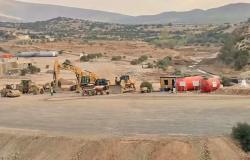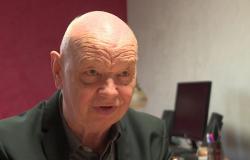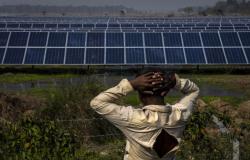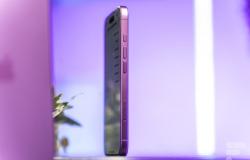In the southern suburbs of Beirut, targeted by another night of intense Israeli strikes, portraits of Hezbollah “martyrs” float on the ruined buildings, guarded by militants of the formation, sometimes armed.
A few minutes from the congested streets of Beirut, the southern suburbs which were teeming with life a few weeks ago are another world: the neighborhoods are deserted and an acrid smell of powder hits the throat.
A building in the Kafaat district, hit by strikes at dawn on Friday, is still burning, drowning the entire area in thick smoke. All around, Hezbollah militants, dressed in black, some carrying holstered machine guns, established a security cordon.
Next to it, a red fire truck lies on its side, hit by a new strike before being able to put out the fire, near a pile of charred cars.
In the targeted areas, the mountains of rubble which have taken the place of buildings are topped with yellow or red Hezbollah flags, the color of revenge.
Beside them float the portraits of the “martyrs” of the powerful formation, military or political leaders killed by Israeli raids.
On every street corner, new portraits of Secretary General Hassan Nasrallah, killed in an Israeli strike on September 27, with the words “Divine victory is coming”, the surname of the Hezbollah leader meaning “victory of God”.
The street leading to the area where he was targeted by a spectacular strike, which destroyed seven buildings in a wealthy neighborhood, is blocked. Just like the one leading to the area where his presumed successor, Hachem Safieddine, was killed in early October.
– Appearance of life –
In the inner districts, a semblance of life remains. But few residents still live in the suburbs, where 600,000 to 800,000 people lived before the war, according to sources.
“When the Israeli army announces evacuation orders before bombing, we flee the house, even in the middle of the night, and wait for a few hours in the open before returning,” says a young woman who has nowhere to go , and does not want to give his name.
In a deserted street, a craftsman quietly makes rattan chairs. A hairdresser cuts the hair of a client, seated in a chair on the sidewalk.
“We come in the morning to open our businesses and we leave in the afternoon, before the strikes,” says a mechanic who agrees to be interviewed, also refusing to be named.
He has settled his family in the mountains and travels back and forth daily. Even if the route he takes was targeted, Wednesday and Thursday, by Israeli strikes on the outskirts of Beirut.
Pharmacies are open and fruit and vegetable sellers have set up stalls for the few residents still there. But many businesses whose windows were blown out remain closed.
A few residents hastily gather a few belongings in their car before leaving for safer areas. A crane removes furniture from the top floor of a building whose lower floors have collapsed.
A man on a motorbike takes pictures for his family to show them the damage caused by raids on their street.
The incessant bombings since September 23 have caused more destruction, according to witnesses, than the last war between Israel and Hezbollah, in 2006, which lasted 33 days.
Breaking the strange silence, martial music escapes from a street where buildings have been reduced to ashes, and cameras are installed: Hezbollah is filming a propaganda clip.
Activists from the pro-Iranian group are everywhere, at the entrances to neighborhoods or traveling on motorcycles, wary of journalists. The Lebanese army maintains rare checkpoints at certain entrances to the southern suburbs, while others are deserted.
Israeli drones are flying over the area. Their incessant buzzing is now part of daily life in the suburbs but also the congested capital, a few minutes by car from devastated neighborhoods.
Do you have a real estate project in mind? Yakeey & Médias24 help you make it happen!






